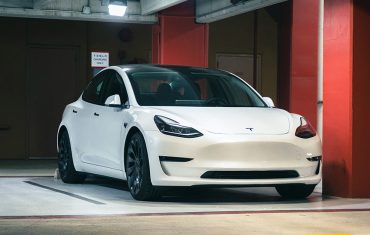
Reconciling the end of the fuel excise discount with ESG targets
For your fleetTo call 2022 volatile is something of an understatement. Rising energy costs and cost-of-living are making the day-to-day challenges of paying bills and putting food on the table that little bit more difficult. The jump in the Consumer Price Index and interest rates means life is tougher for everyone, including those in business – and those that rely on vehicle fleets.
Furthermore, the removal of the Federal Government’s 22.1 cents per litre fuel excise discount has put even more pressure on fleet budgets and the people charged with managing operating costs.
So, how can fleet managers strive to help their organisations meet their Environmental, Social and Governance (ESG) targets when fuel and energy costs continue to rise?
Inflation and interest rate rises hit the Australian economy
cA sharp rise in global rates of inflation is playing its part in the showdown of the world’s major economies.
Australia’s rate of inflation has grown significantly acorss the 2021-2022 financial year. Australian Bureau of Statistics figures show that, over the 12 months to June 2022, the Consumer Price Index (CPI) rose 6.1%, and recorded a further 1.8& rise in the September quarter of the 2022-2023 financial year.
According to ABS data, the biggest CPI rises were recorded in the housing sector, with furniture costs climbing 7% and new dwelling purchases by owner-occupiers jumping 5.6%. And the next biggest rise was in automotive fuel costs. In the 2021-22 financial year, the cost of putting petrol, diesel or LPG in your car or truck rose by 4.2%.
Here in Australia, we’ve seen the Reserve Bank raise the cash rate target from 0.85% in June 2022, to 2.6% as of October 2022 – a full 1.75% lift in official interest rates as the RB seeks to put the brakes on inflation by curbing spending. Together with CPI and fuel cost increases, an increase in the cost of borrowing throws up some hefty challenges for fleet managers.
Dumping the fuel excise discount
While conflict in the Ukraine has contributed to energy price increases, another factor at play has been the removal of the Federal Government’s 22.1 cents-per-litre fuel excise discount on September 28th.
According to the ACCC, the restoration of the full excise amounts to additional taxes on petrol and diesel prices of 25.3 cents per litre. For every dollar spent at the pump from here forward, 44.2 cents per litre of that ends up in Federal Government coffers.
While the decision to roll back the discount was initially made by the Morrison Government in March 2022, the Albanese Government stood by the September deadline with Treasurer Jim Chalmers stating that they could not afford to extend the cut, which had cost in excess of $3 billion.
Balancing environmental, social and governance goals with costs
Regardless of what’s happening with cost-of-living and costs at the bowser, one thing hasn’t changed. Climate crisis. And addressing issues concerning climate change continues to have a major impact on the Environmental, Social and Governance (ESG) goals of many businesses, both here in Australia and around the world.
Among the biggest barriers cites by many organisations for not making the switch to EVs (to date, anyway) has been the costs associated with setting up recharging infrastructure, and the availability of fit-for-purpose EVs. The financial climate that has developed over the last 18 months, however, could arguably be seen as a tipping point.
With the removal of the fuel excise, there is a little evidence to suggest that the cost of diesel and petrol will be falling anytime soon. Adding EVs to your fleet’s composition is one way of overcoming the rising pump costs and extending your budget. Likewise, if it makes financial sense for your organisation, now may be the time to put together a business case in favour of investing in the infrastructure required to manage a fleet of EVs ahead of further interest rate rises.
With a few rare exceptions, delivery times for new vehicles continue to sit at around 18 months to two years, and even longer in the case of certain brands and models like Toyota’s Camry, Rav4, and Hilux variants, and the increasingly popular Ford Ranger 4×4 range.
For fleet managers due to turn their fleet over within this two-year timeframe, new vehicle delivery delays and lower running costs only adds to the suggestion that this could be the time to pay serious consideration to introducing EVs into your fleet mix.
The cost of staying with petrol and diesel
New South Wales, Victoria, South Australia, the ACT and Queensland all have EV targets. For example, NSW is targeting 50% of all public vehicle sales to be EVs or Zero-Emissions Vehicles (ZEVs) by 2030. Armed with a budget of $33 million dollars, the NSW Government is also committed to making its vehicle fleets 100% ZEVs within the same timeframe.
These states offer a range of incentives like stamp duty exemptions and registration discounts.
At the of writing, the Federal Government was yet to state targets for EV use. However, in July 2022, the recently-elected Albanese Government tabled the Treasury Laws Amendment (Electric Car Discount) Bill 2022 in Federal Parliament. Under the amendments, zero or low-emissions vehicles that fall below the Luxury Car Tax threshold would be exempt from Fringe Benefits Tax.
When added together, the incentives offered by state and federal governments will make running a fleet of fit-for-purpose electric vehicles a far cheaper proposition than a fleet consisting of their internal combustion engine counterparts.
In conclusion
Like many other developed economies around the globe, Australia is in the middle of challenging economic times. The rise in the cost of living for Australian households and businesses is a clear threat to economic growth. On top of this, the removal of the fuel excise discount at the end of September 2022 has only added to the pain being felt by businesses running vehicle fleets as costs rise even further.
These challenges aside, the ESG targets of businesses still need to be met. But do the pressures of rising costs accelerate these ESG targets or make them more difficult to attain? It could all come down to a rethinking of attitudes around electric vehicles to encourage progress rather than stagnation.
Talk to SG Fleet about kicking off your transition to electric vehicles.
 Driving Insights
Driving Insights



